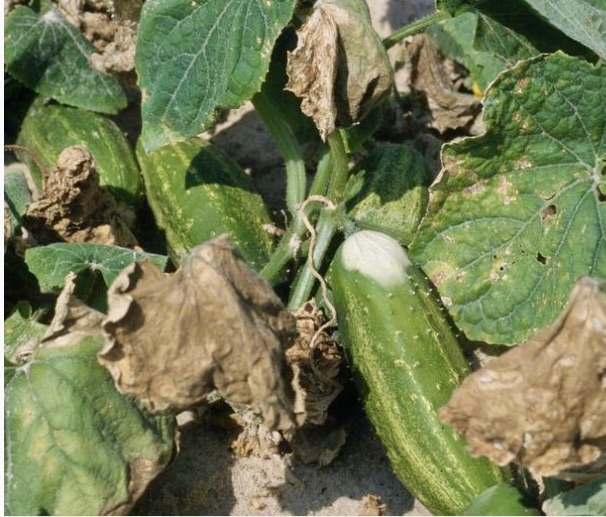Heat Stress on Plants – Manage Your Expectations
go.ncsu.edu/readext?1080591
en Español / em Português
El inglés es el idioma de control de esta página. En la medida en que haya algún conflicto entre la traducción al inglés y la traducción, el inglés prevalece.
Al hacer clic en el enlace de traducción se activa un servicio de traducción gratuito para convertir la página al español. Al igual que con cualquier traducción por Internet, la conversión no es sensible al contexto y puede que no traduzca el texto en su significado original. NC State Extension no garantiza la exactitud del texto traducido. Por favor, tenga en cuenta que algunas aplicaciones y/o servicios pueden no funcionar como se espera cuando se traducen.
Português
Inglês é o idioma de controle desta página. Na medida que haja algum conflito entre o texto original em Inglês e a tradução, o Inglês prevalece.
Ao clicar no link de tradução, um serviço gratuito de tradução será ativado para converter a página para o Português. Como em qualquer tradução pela internet, a conversão não é sensivel ao contexto e pode não ocorrer a tradução para o significado orginal. O serviço de Extensão da Carolina do Norte (NC State Extension) não garante a exatidão do texto traduzido. Por favor, observe que algumas funções ou serviços podem não funcionar como esperado após a tradução.
English
English is the controlling language of this page. To the extent there is any conflict between the English text and the translation, English controls.
Clicking on the translation link activates a free translation service to convert the page to Spanish. As with any Internet translation, the conversion is not context-sensitive and may not translate the text to its original meaning. NC State Extension does not guarantee the accuracy of the translated text. Please note that some applications and/or services may not function as expected when translated.
Collapse ▲Back in April of this year we talked about heat related concerns on gardeners, especially when many of us were eagerly anticipating getting outside to get our new plants going. Like everyone else, those glossy, gorgeous seed catalogs had me whipping out my credit card! Hey, I could have worse guilty pleasures to spend money on and at least most of my garden glories have a decent Return-On-Investment in produce. Everything is relative.
 Let’s not forget about what heat stress does to our plants. Heat stress in Western North Carolina plants can have significant impacts on their health, growth, and survival, especially as we experience hotter summers. Before we can address any problems, due diligence investigation is necessary. Instead of hitting the panic button, let’s see if there’s an “easy button” answer. What are we looking for?
Let’s not forget about what heat stress does to our plants. Heat stress in Western North Carolina plants can have significant impacts on their health, growth, and survival, especially as we experience hotter summers. Before we can address any problems, due diligence investigation is necessary. Instead of hitting the panic button, let’s see if there’s an “easy button” answer. What are we looking for?
- Wilting and Curling: Leaves and stems become limp and droop as plants lose water faster than they can absorb it. Leaves may also curl to reduce sun exposure and minimize water loss. We’re seeing this on tomatoes now.
- Leaf Scorch and Sunburn: Leaves dry out and turn brown or yellow around the edges, or appear bleached with white patches indicating tissue damage from intense light. Check the beans and cukes in the garden. I’ve already had questions about this.
- Blossom and Fruit Drop: Plants may drop flowers prematurely or produce fewer blossoms and trees may drop undeveloped fruit to conserve energy. Carrying around the next generation in the heat ain’t easy.
- Stunted Growth: Heat stress disrupts photosynthesis and nutrient uptake, leading to slower growth or arrested development. Plants farm sunlight making their own food through Photosynthesis. It’s a process that takes certain photosynthetic machinery that doesn’t function as efficiently in extreme heat, (kinda like your cell phone) impacting carbon fixation. It also disrupts nutrient uptake, as evidenced by changes in mineral concentrations in plants under heat stress.
- Bolting: High temperatures can cause cool-season vegetables like lettuce or spinach to flower prematurely, ending their edible life cycle.
- Sunscald: Fruits, such as apples, tomatoes, and melons, can develop discoloration, blisters, or sunken areas on the side facing the sun.
Prolonged heat exposure can weaken plants over time, blowing up existing problems and potentially leading to death if coupled with water stress. Not to mention stressed plants’ self defence mechanisms are down making them easy pickings for pests, predators and disease. We’re not the only ones who are hungry.
So What can you do to help your plants adapt to heat stress?
- Slow and deep watering, especially during the cooler hours (e.g., 6 p.m. to 8 a.m.), helps minimize water loss and encourages deep root growth.
- Pick up an irrigation timer in the hardware section and attach it to the hose.
- Put out enough mulch in the right places to conserve soil moisture and moderate soil temperature.
- Use shade cloth or other means to protect plants from direct sun, especially during the hottest parts of the day.
- Leave off planting and transplanting until cooler temperatures arrive to minimize stress.
- Avoid fertilizing during intense heat periods, as this can encourage new growth that requires more TLC.
- Weeds compete for water and nutrients so remove them (but refer to the April article safe gardening)
- And my favorite: Research into Resilience: Investigation “How Stuff Works” (aka Snooping). Understanding how plants respond to heat stress at the molecular level, including the role of heat shock proteins and miRNAs, to develop more heat-tolerant crops and strategies for mitigation.
Contact me with questions at minda_daughtry@ncsu.edu.




